Louisville: Bourbon Barrels, Baseball Bats and Big Ideas
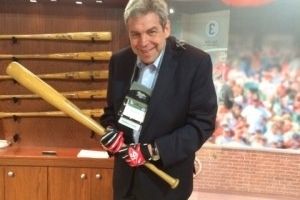
A blog post from Executive Director Marvin Pinkert and Education Director Ilene Dackman-Alon. To read more posts by Marvin click HERE. To read more posts by Ilene click HERE.
Sandwiched between Rosh Hashanah and Yom Kippur, Ilene Dackman-Alon and I attended the 75th annual meeting of the American Association for State and Local History, held this year in Louisville, KY. It was a great opportunity to tour museum sites, confer with colleagues, discuss industry trends and return with ideas to improve JMM. Here are a few of the highlights:
1. Serving the Visually Impaired – Ilene attended a workshop at the American Printing House for the Blind. Founded in 1858, APH is the oldest organization of its kind in the United States. From 1858 until the Civil War began, APH organized its operation and raised funds to create embossed books. After the war, APH produced its first tactile books. By the early 1870s, APH was operating on a national scale. APH is the official supplier of educational materials to all students in the U.S. who meet the definition of blindness and are working at less than college level. We saw the actual printing of pages with Braille letters as well as the binding of the books.
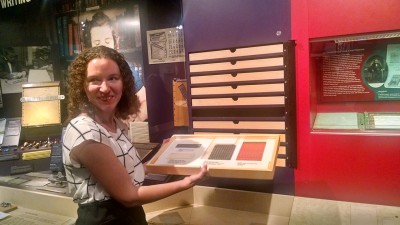
It was fascinating to hear from museum educators (who happened to be visually impaired as well) about how they experience museums and the importance of making museums accessible to all types of learners using a variety of interactives and engaging materials for all of the senses. I loved seeing all of the different tactile materials that are produced at APH in so many subjects (music, math, science, English arts, social studies). They even showed us the Braille version of the program from President Obama’s Second Inauguration.
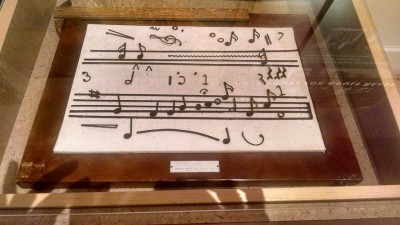
I was pleased to see that that many of the steps that the JMM has taken to serve the visually impaired under the leadership of Robyn Hughes are in line with best practices at APH. As we move forward in creating new exhibits at the JMM, I hope we can implement some of the ideas such as wheel-chair level chair rails, Braille texts and panels to create a richer museum experience.
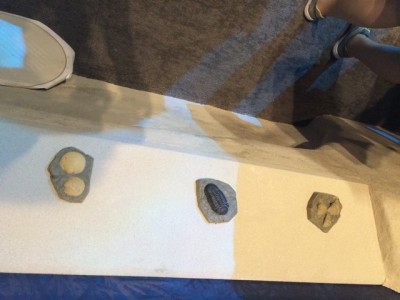
Marvin took a tour of neighboring historic sites and also had a chance to see some interesting work being installed at the Falls of the Ohio State Park (just across the river from Louisville) where a firm had integrated tactile exploration into every part of its core exhibit.
2. We also enjoyed hearing the keynote speaker, Sam Wineburg, author of Historical Thinking and Other Unnatural Acts. Wineburg is an educator at Stanford’s Graduate School of Education. He recently developed the Reading Like a Historian Curriculum which has been downloaded over 2 million times. The curriculum engages students in historical inquiry, one of the basic pedagogic skills that is a thrust of the Maryland Career and College Ready Standards and Common Core curriculum. Each lesson revolves around a central historical question and features sets of primary documents designed for groups of students with diverse reading skills and abilities.
Wineburg used the term “digital natives” to describe the generation that has grown up in the digital age. The Internet provide us with so many different websites . One of the questions that he raised, Who is an Informed Citizen in the Digital Age? How much of the information on the web should be believed? Wineburg spoke about “The Digital Tookbox” and questions that one must ask to realize if the information and website really come from a reliable source. He spoke about a case study that took place in Los Angeles, where teachers gave the students three websites and had them write about the reasons for the Holocaust. All three website had not been vetted, and many students took the information on the website as absolute facts. They went on to write essays with claims that the Holocaust never took place.
3. The history relevance campaign – a group within AASLH (among the leaders, Baltimore’s own John Durel) is trying to create energy on a national campaign to promote the value of history. The effort was a response to the marginalization of history as a subject matter, both in schools and in the public conversation about cultural institutions. The organizers are stressing a common vocabulary that organizations like ours can use in making the case for greater civic and foundation support: http://www.historyrelevance.com/#!value-statement/ca2m. In the coming months I will be urging Historic Jonestown Inc., the Greater Baltimore History Alliance and the JMM Board to add our voices to this national movement.
4. A different way of looking at historic sites. The archeologist giving the tour at the Farnsley-Moremen House began his talk by saying “no one famous or important ever lived here, it was not the site of a battle or any other monumental event.” He went on to demonstrate, however, that it was a great site to talk about historical thinking and to engage the public in the process of uncovering history. It caused me to think deeply about the balance we need to achieve between fixing our gaze on the important historic events that took place in our synagogues and on our block – and the illustrations we can offer through these spaces about “how we know” the lives of average Jewish Marylanders.
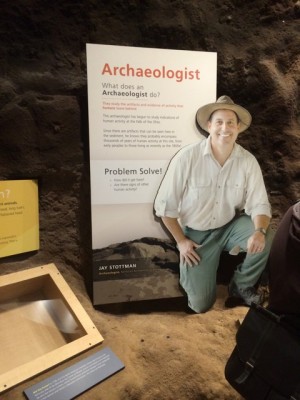
5. “Unfolding Events” – in many ways this was the most thought-provoking session I attended. It was an open forum discussion about how museums could/should respond to “unexpected events” that have strong impacts on the cultural community – examples included Ferguson and Baltimore, the legislative struggle over gay rights that especially impacted Indiana, and the debate over Confederate flags, statues and emblems that is raging within and without Civil War sites. One of the most interesting side-bars was the question of the obligation of museums to collect materials on political and social controversies that impact their respective communities. This is a topic we raised at this week’s JMM Collections Committee.
6. One more honor for Mendes Cohen. Ilene and I have to admit that one of the highlights was taking home the Leadership in History Award for the A-Mazing Mendes Cohen project. What a great tribute to the whole team that put together this incredible project. On the morning of the awards ceremony, Ilene and I staffed a booth explaining the background of the exhibit and living history character. The most bittersweet moment was that nearly everyone who came by the booth said “when can I come and see it” and we had to explain the unhappy fact that the project had expired. It certainly was an inspiration to bring back some of this experience within our new core exhibit.

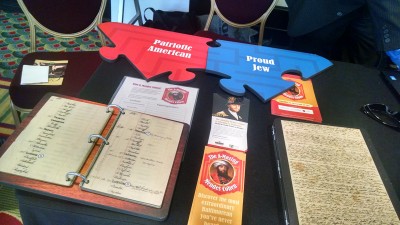
7. Finally – full confession – we also had fun. Marvin attended a workshop on “gamification” of museum content. For someone whose two top passions are board games and museums this was as good as it gets. On Thursday night we took a stroll down “Whiskey Row” – now home to several museums including the Frazier Museum (with a great homemade exhibit and theater program on Lewis and Clark) and the Louisville Slugger Factory Tour. Here you see me holding Mickey Mantle’s baseball bat (but that’s only because Hank Greenberg’s wasn’t available).
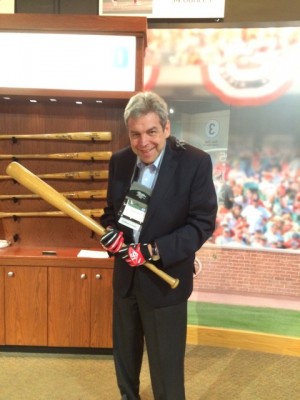
But by far my most unusual Louisville experience was attending a small reception at the Evan Williams Bourbon Experience. This is the home of a business that proclaims itself Kentucky’s first commercial distiller. It is indeed still a family owned business – except that family is not the Williams’ it’s the Shapira’s that have owned the parent company, Heaven Hill, for seven generations (for those of you who attended the Schnapps with Pops program in June, this comes as no surprise). The tour of the faux factory was entertaining and it ends with a bourbon tasting. I’m afraid the 23 year old bourbon was wasted on my uneducated palette.
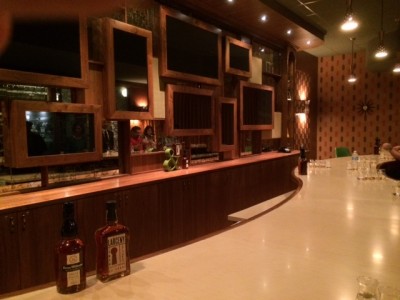
Next year this conference moves to Detroit. I’ll let you know if they let us test drive a Corvette.
